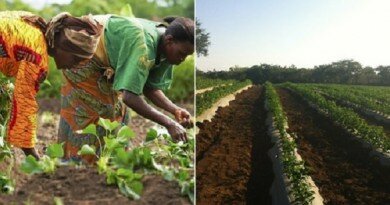Cotton farming on the path to recovery
By Stanley Wabomba/Grace Maina
Cotton farming in Kenya is on the recovery path, thanks to an ambitious programme being fast-tracked by value chain players.
The programme launched in Tana River County aims at filling gaps along the value chain, equipping farmers with farm inputs, credit, provision of extension services and linking them to the market.
Anthony Mureithi the interim director of fibres crops directorate under the Agriculture and Food Authority (AFFA) when launching the new approach in Bura, said the initiative is part of other strategies being fast tracked to help farmers revive cotton farming.
“We are working even with county governments and other players to ensure farmers go back to cotton farming. In this way we expect to reclaim our lost glory in cotton farming, create more wealth and enhance job creation through revival of agro based industries,” Mr. Mureithi said.
In 1970s and 1980s when cotton farming was second in the country in terms of employment after the public service, Bura used to produce 30 percent of the national production.
Challenges in the market as well as liberalization of the market led to an influx of second hand clothes as well as cheap imports which saw the situation deteriorate in the 1980s and 1990s.
In the aftermath, a number of textile companies closed and farmers abandoned the crop.
The national government is keen to reclaim the glory by working with counties as well as value chain stakeholders.
Under the 32.9 million shillings deal, value chain players will implement a four-month pilot project that will see farmers given certified seeds.
Bura MP Ali Wario welcomed the new initiative saying farmers stand to gain after a long period grappling with grinding poverty among other miseries.
“The launch of this programme will help in maximizing farmers’ income and thus create more wealth in the county and technology transfer,” said Mr. Wario.
From the new agreement, farmers will receive credit from the agricultural Finance Corporation to fund land preparation, seed acquisition, fertilizer, herbicides, spraying labor and harvesting.
To bridge the gap, Kenya government imports substantial amounts of cotton lint and seed cake for local textile mills and feed manufacture mainly from Uganda and Tanzania. Tanzania produces more than 10 times of Kenya production.
Mureithi addressing farmers in Bura area confirmed that the national government received financial and technical assistance from the development partners to establish a national classifying system thus joining other countries in the world which are the same facility.
Rivatex East Africa committed to buy at a minimum of 150 shillings per kilo.





